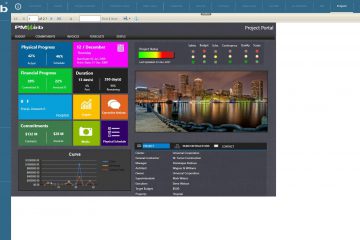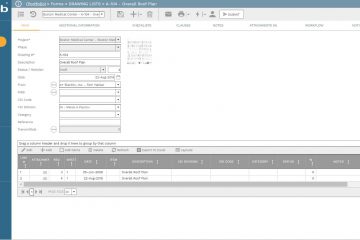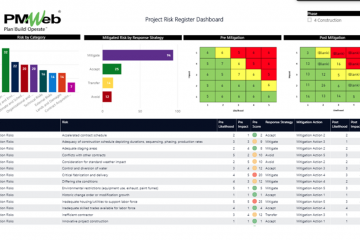Although a Project Management Information System (PMIS) like PMWeb mainly manages the delivery of capital construction projects, nevertheless, organizations can also use PMWeb to enable an agile digital transformation of their current procurement and contract management practices.
Each contract that needs to be managed by the procurement and contracts department is added as a project unless the contracts to be managed are closely interrelated. For example, the organization might have a project for developing project management skills for their employees. This requires having contracts with different training providers as well as the testing company. In this case, a single project titled “Professional Project Management Development Program” is added and for which all contracts with the training providers will be part of this project.
Another example could be when there is a program to upgrade the Information Technology Infrastructure where there are contracts with hardware vendors, cabling and infrastructure, software vendors among others. The advantage of using PMWeb projects and contracts modules is that different user access permission and security rights can be assigned to each project, contract, and process.
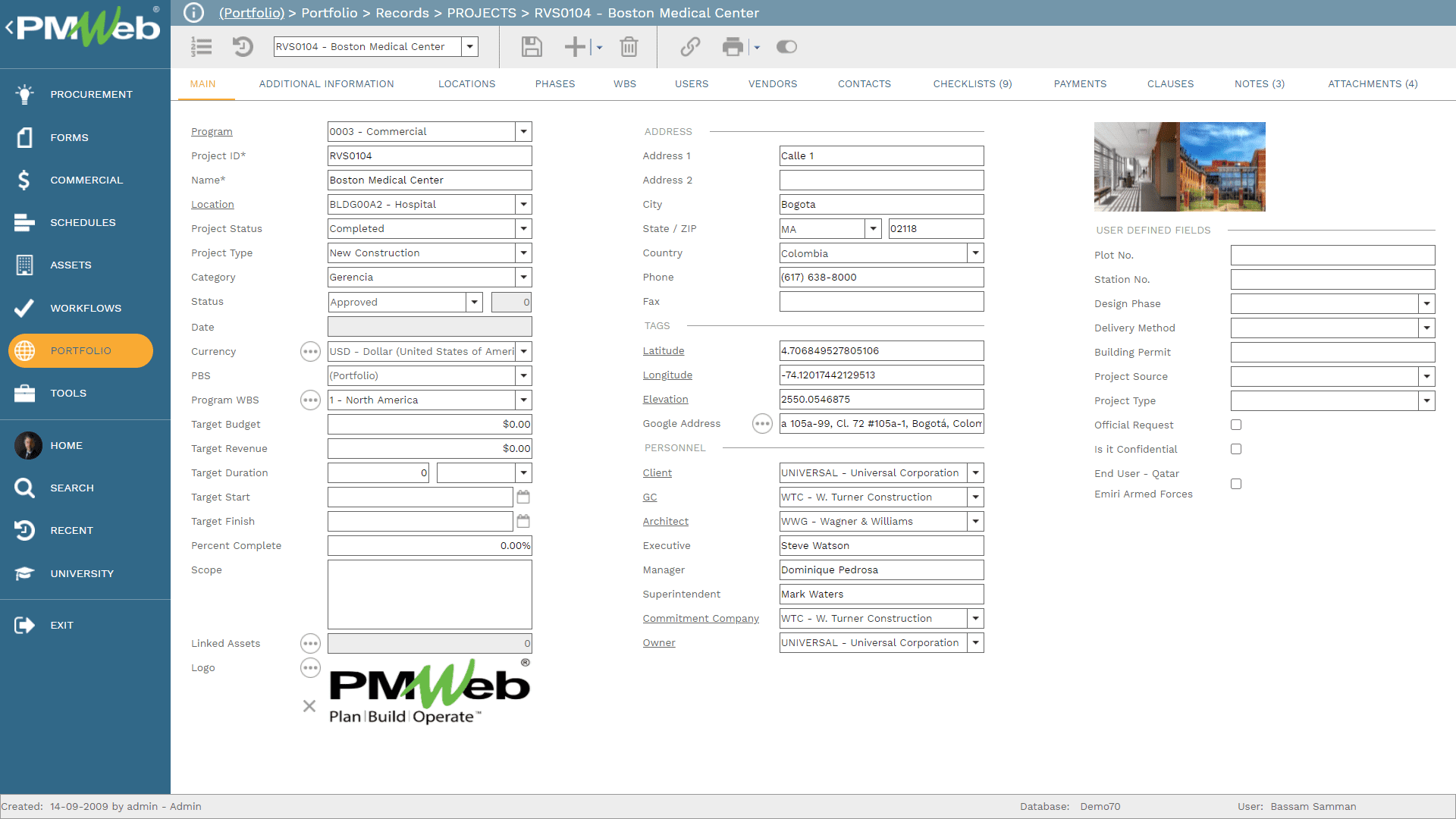
Similar to any other department, the procurement and contracts department needs to have a document management repository to upload and store all documents that they will use. PMWeb document management module allows creating folders and subfolders in the desired structure to upload and store documents.
The filing structure usually matches the physical filing structure maintained by the procurement and contracts department. Permission rights can be added to each folder and subfolder as well as subscribe to each folder or subfolder when documents or document versions are uploaded or downloaded. As recommended, the PMWeb folders can be structured by project and contracts within a project to enforce controlled access.

Another requirement for the procurement and contracts department is to have a single and comprehensive repository of all vendors, suppliers, and other entities that might do business with. PMWeb vendors module will be used to capture the details for all those entities include their addresses, contacts, registrations, insurances among others. Of course, all supportive documents for each entity can be uploaded into the PMWeb document management repository and attached to the relevant entity.
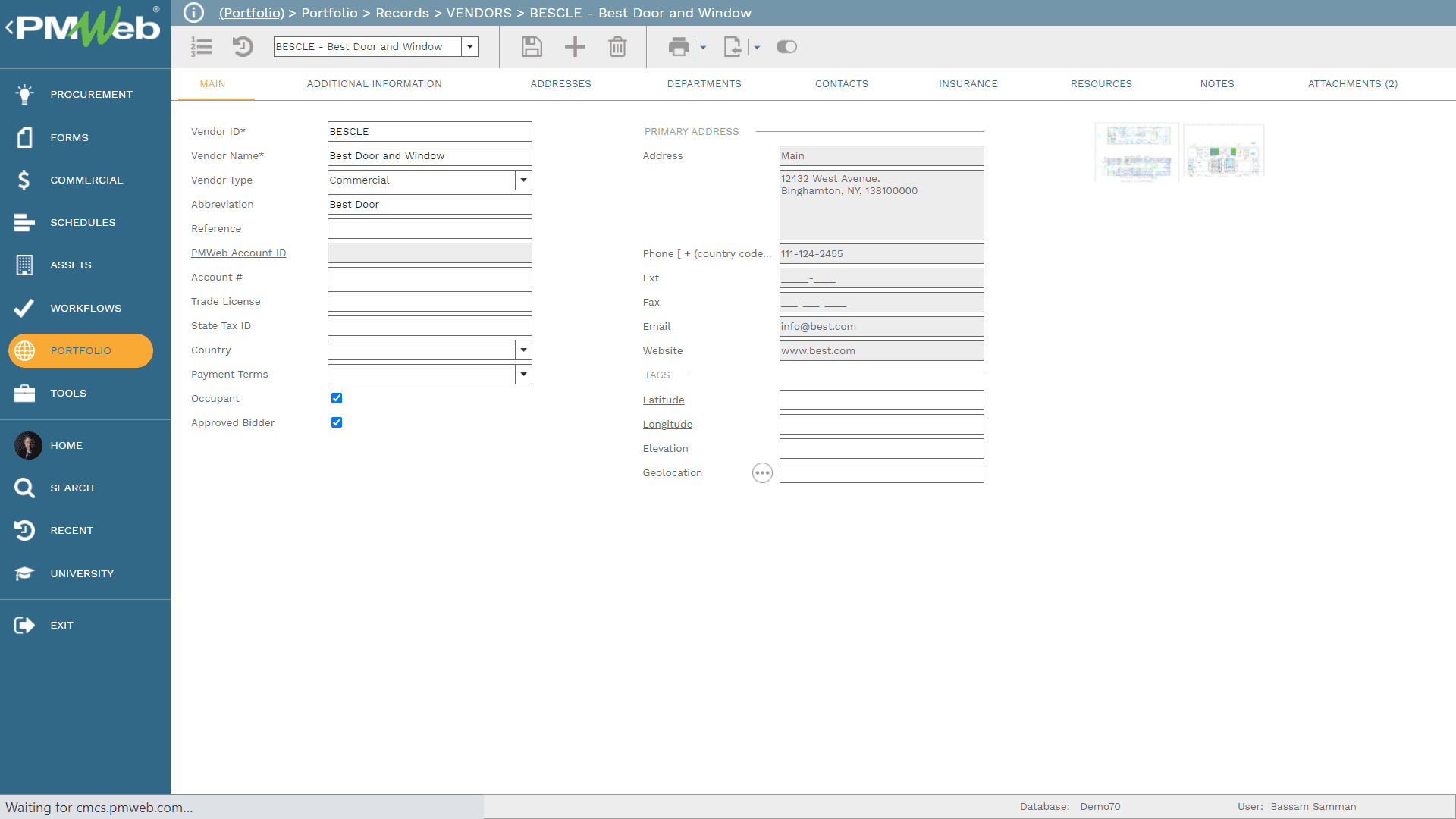
If the procurement and contracts department has the requirement to formalize the registration and prequalification of vendors and suppliers, then the PMWeb Vendor Prequalification module is used. The prequalification can be configured to include the fields for needed information for which vendors and suppliers can access and complete online. When submitted, the procurement and contracts department reviews and qualifies each entity used a predefined scoring template.
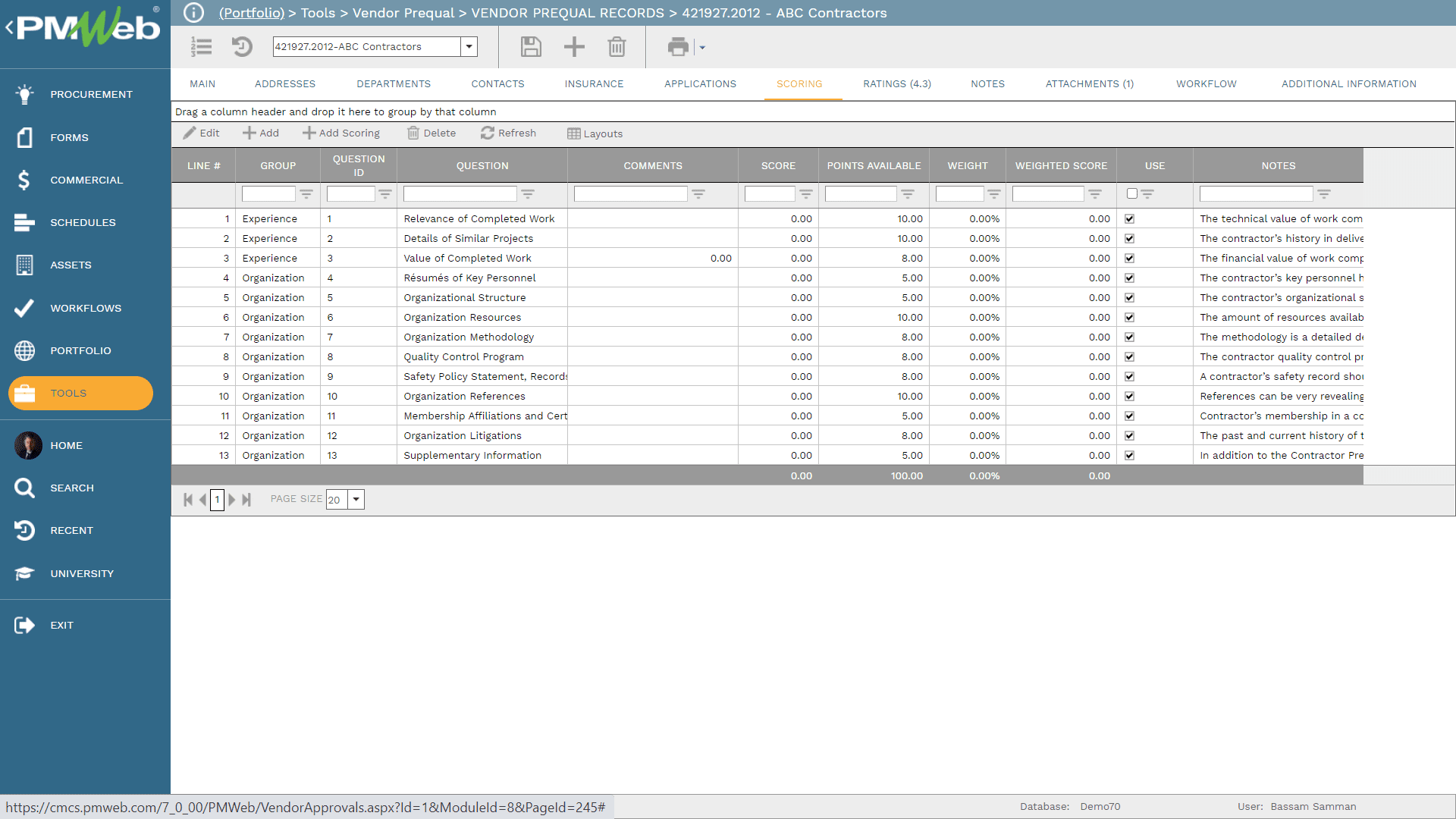
The management of contracts requires defining the cost accounts breakdown structure that is used by the procurement and contracts department to manage the cost associated with the awarded contracts. PMWeb allows creating up to 16 levels of cost accounts although most organizations will not use more than 5 levels. In addition, the financial periods also need to be captured in PMWeb.
In addition, those cost accounts are very important and a must to have if the procurement and cost information captured in PMWeb needs to be integrated with the organization’s financial or ERP solution. The PMWeb cost accounts need to be aligned with the cost accounts using in the financial or ERP solution.
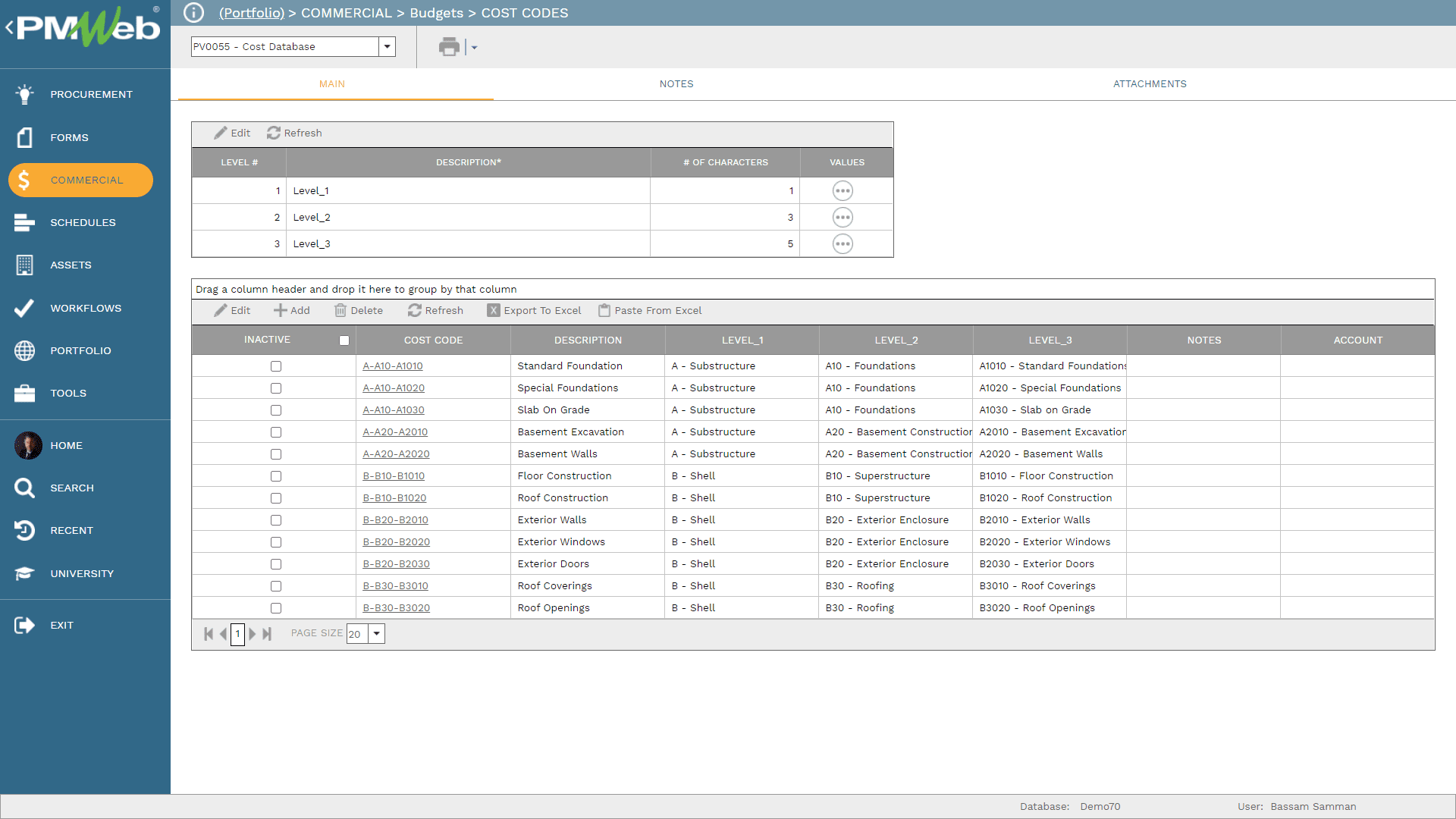
To have a comprehensive and auditable contract management process, it is recommended that the first process to be implemented is to capture the requirements of all departments in terms of what projects they need to have for the next fiscal year. For each one of those projects, also known as initiatives, each requesting department needs to provide the cost estimate for the scope of work as well as an overall master schedule. Each submitted initiative will be reviewed and scored against a pre-defined selection criterium. For approved initiatives, a project will be generated as detailed above.
PMWeb provides different options to create a cost estimate. The first is to add new items with unit price, a unit of measure, and quantities. The second option is to use the PMWeb cost database for which the procurement and contracts department populates with items that are commonly procured by the organization. Each item in the cost database has its unit price, unit of measure, and cost account it belongs to. The third option is to import the cost estimate from MS Excel while the last option is to have predefined cost assemblies of items that are part of each project.
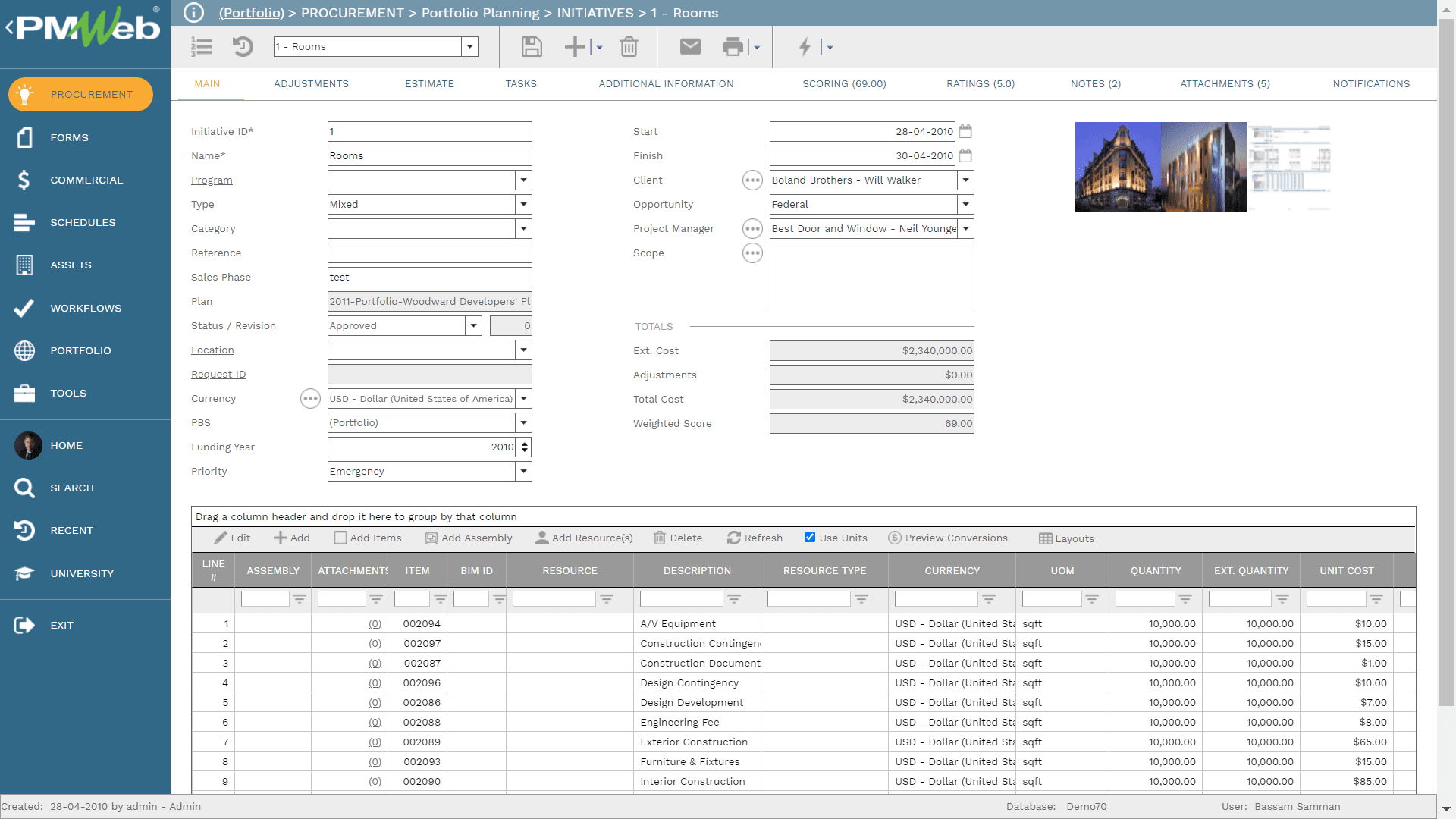
As for the schedule, the user can create the project schedule by either using PMWeb scheduling module or import the schedule from MS Project or Primavera P6. PMWeb allows uploading and storing all project schedule versions and updates.
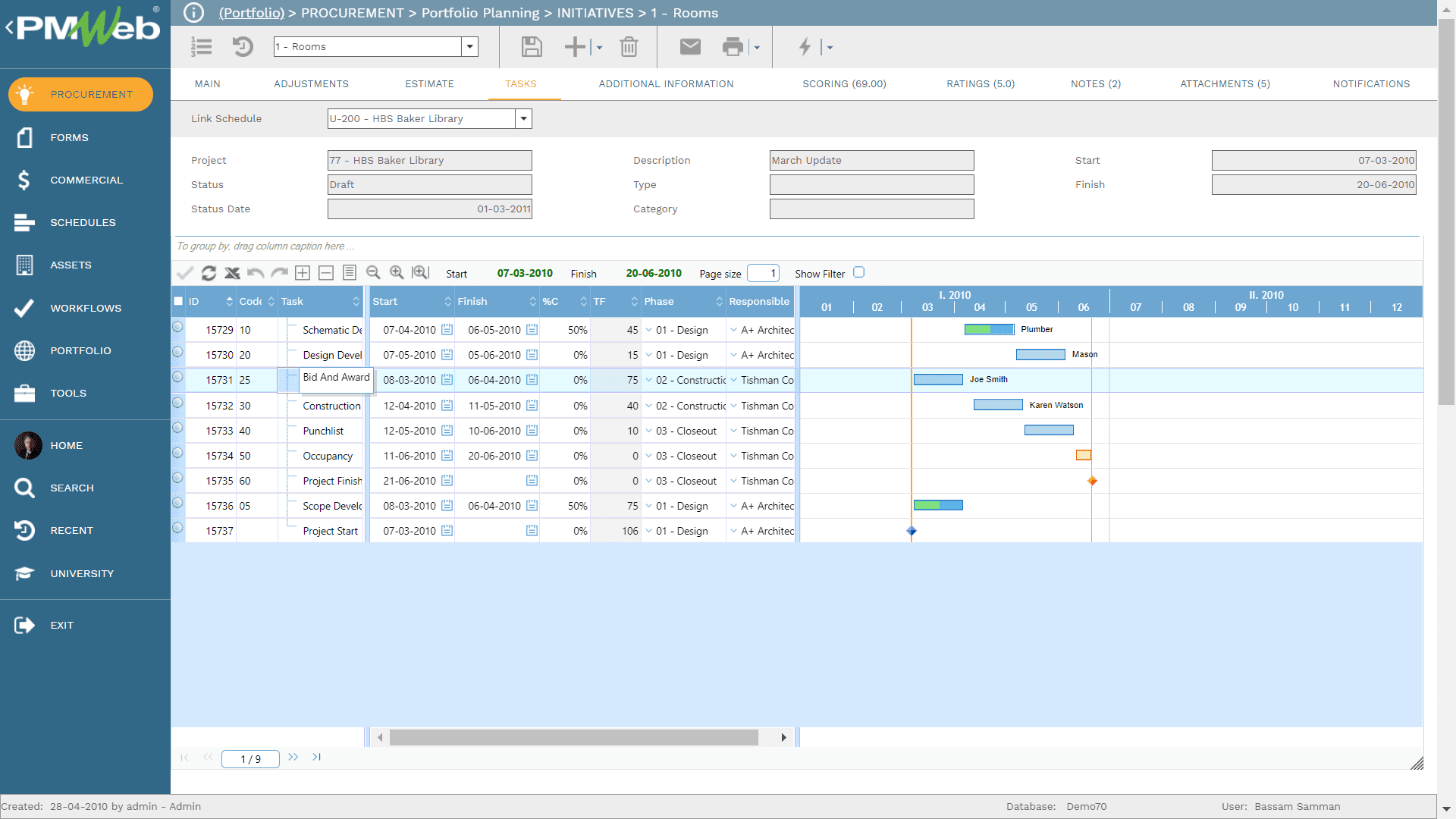
When an initiative or a project request is approved as a project, PMWeb allows generating the project from the initiative. The approved cost estimate will become the basis for creating the project budget which will be captured in PMWeb budget module. In addition, PMWeb allows creating the budget spending plan which needs to be aligned with the project schedule.
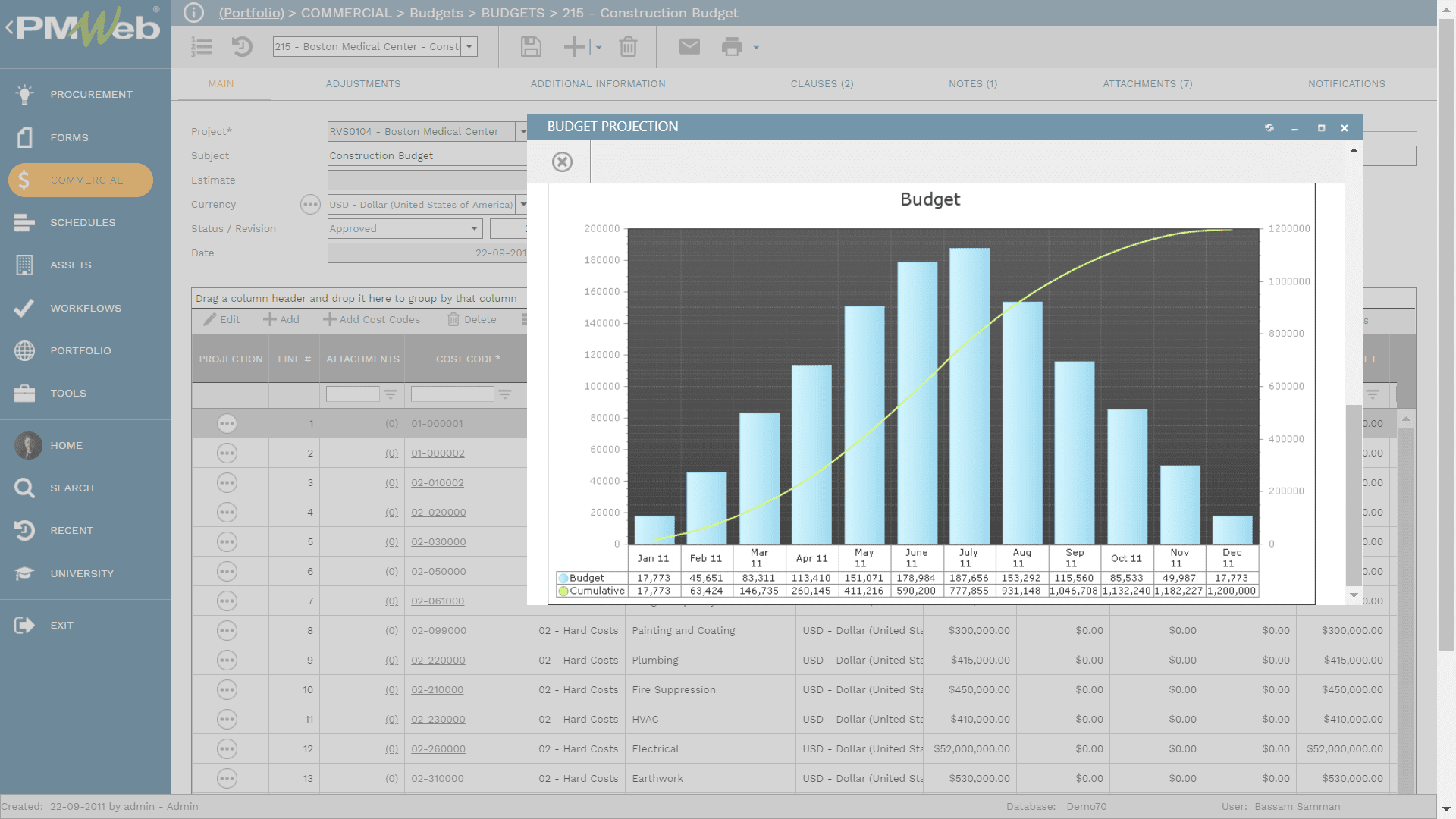
For all budget omissions, additions, and transfers, PMWeb budget request module captures those details. The budget adjustment details associate with the affected cost account as well as the period when this adjustment will take place.
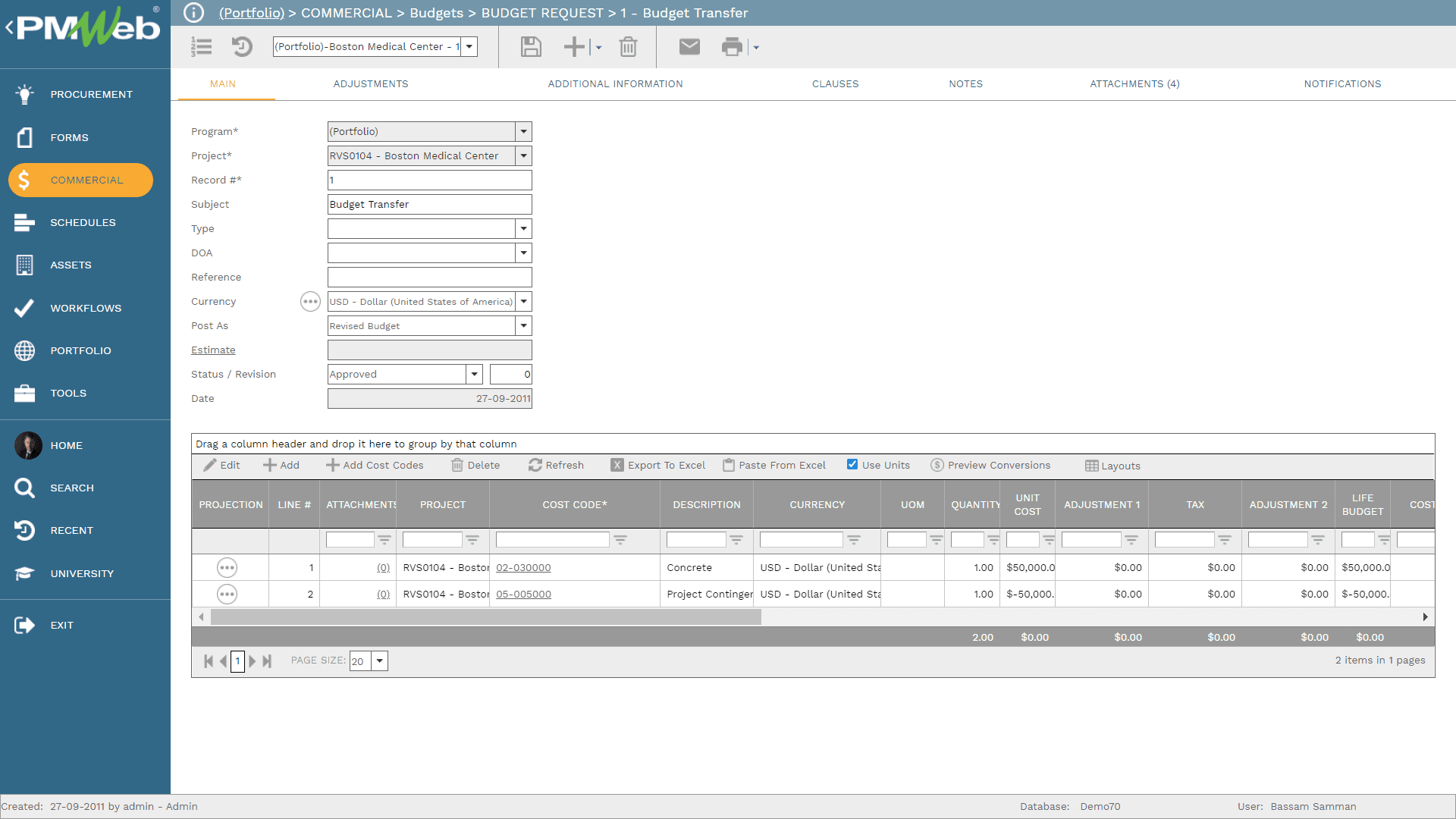
The approved cost estimate will also become the basis for creating the procurement packages for each contract. The approved cost estimate helps generate the procurement record, which captures the details of the invited vendors and suppliers as well as to compare the received bids to what was estimated.
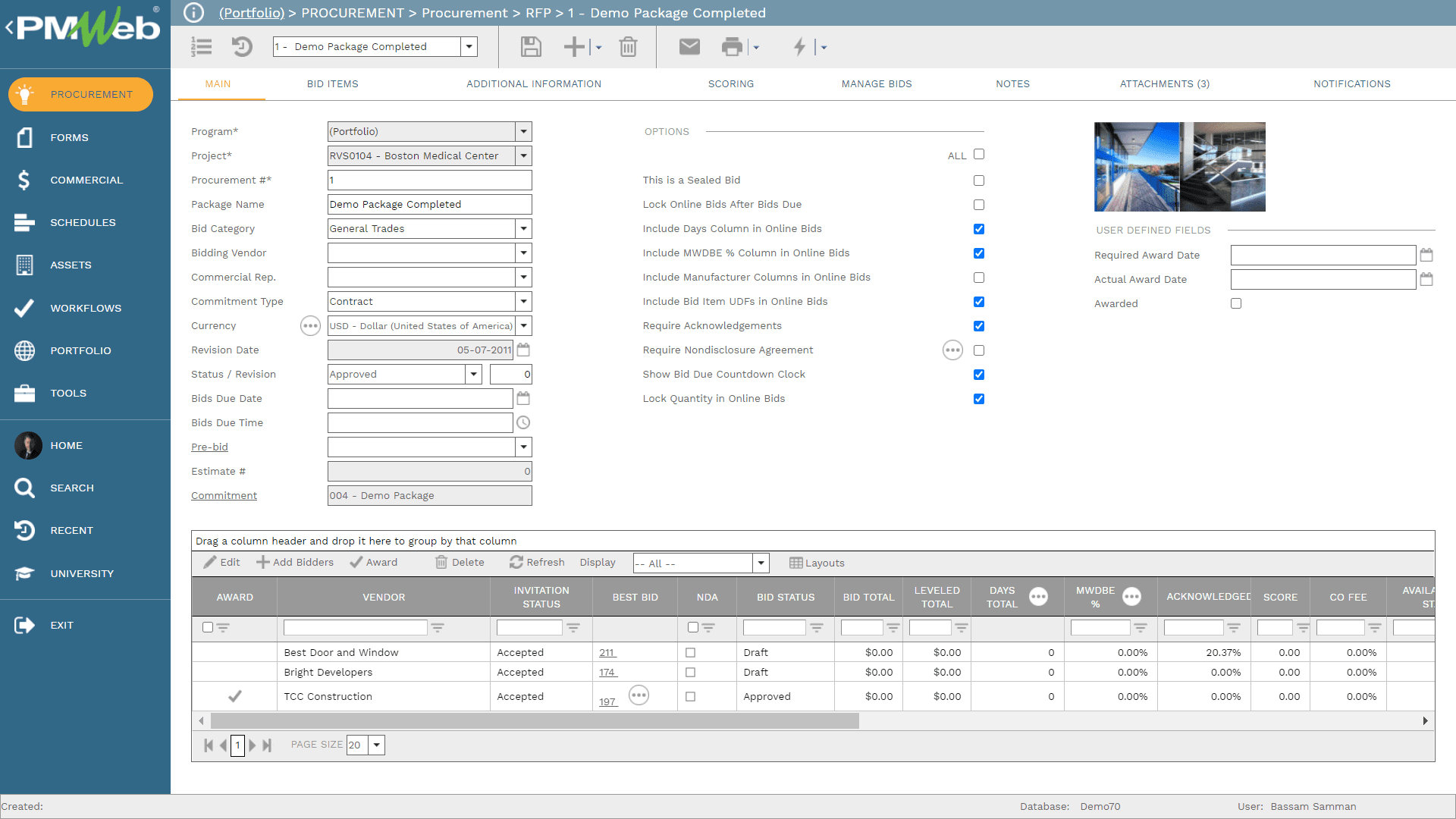
Selected suppliers and vendors will receive invitations to submit their proposals using the PMWeb online bid module. The online bid includes a list of all technical submissions and non-disclosure agreements to be accepted by the bidders. By submitting those bids, the procurement and contracts department can compare bid proposals to the approved cost estimate to ensure that there are no unbalanced bids as well as what is submitted is realistic and in line with what was estimated.
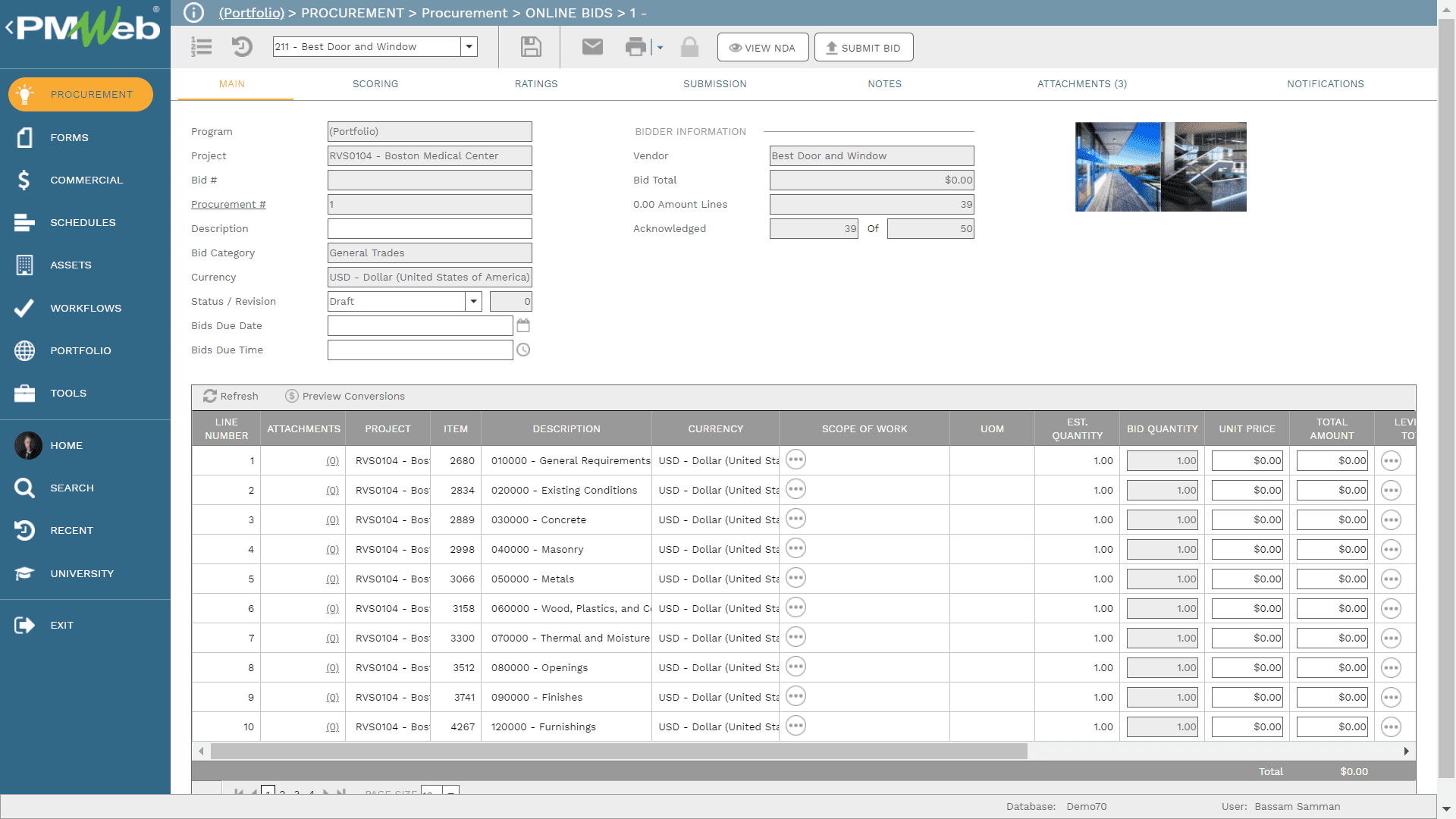
PMWeb can then generate a commitment contract for the successful bidder, which includes the bill of quantity values for each item. The contract will include all terms and conditions including retention percentage, advance payment, and advance payment recovery. Each contract will include fields to capture the details of performance bonds, insurances, and other documents required for each contract including the expiry date of those documents. This will enable the procurement and contracts department to report on the status of those time-sensitive documents.
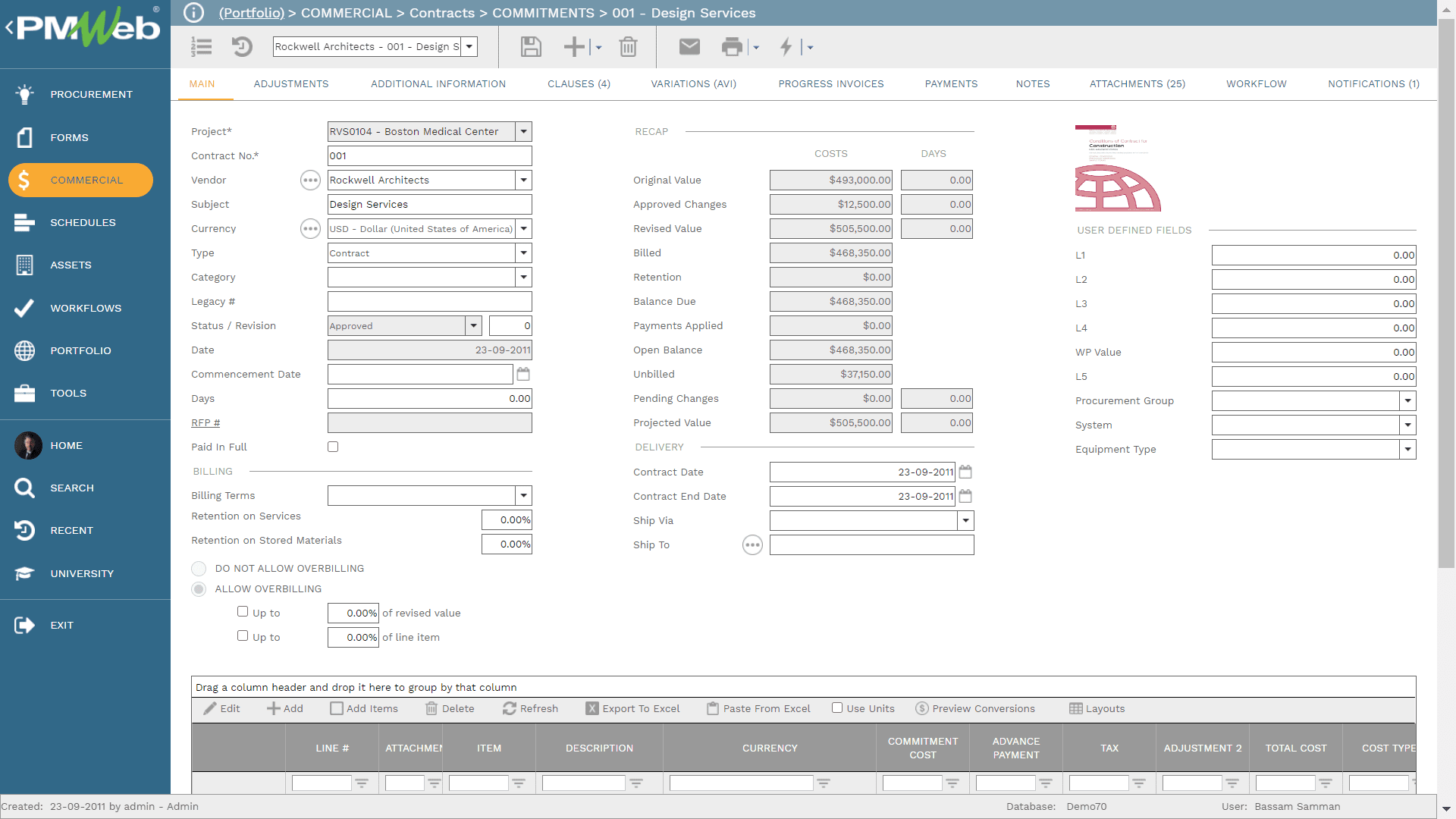
During each contract execution, changes might occur for different reasons. PMWeb change order module then captures all those change requests. In addition, PMWeb has a module to capture all potential changes that could become change requests if they have merit.
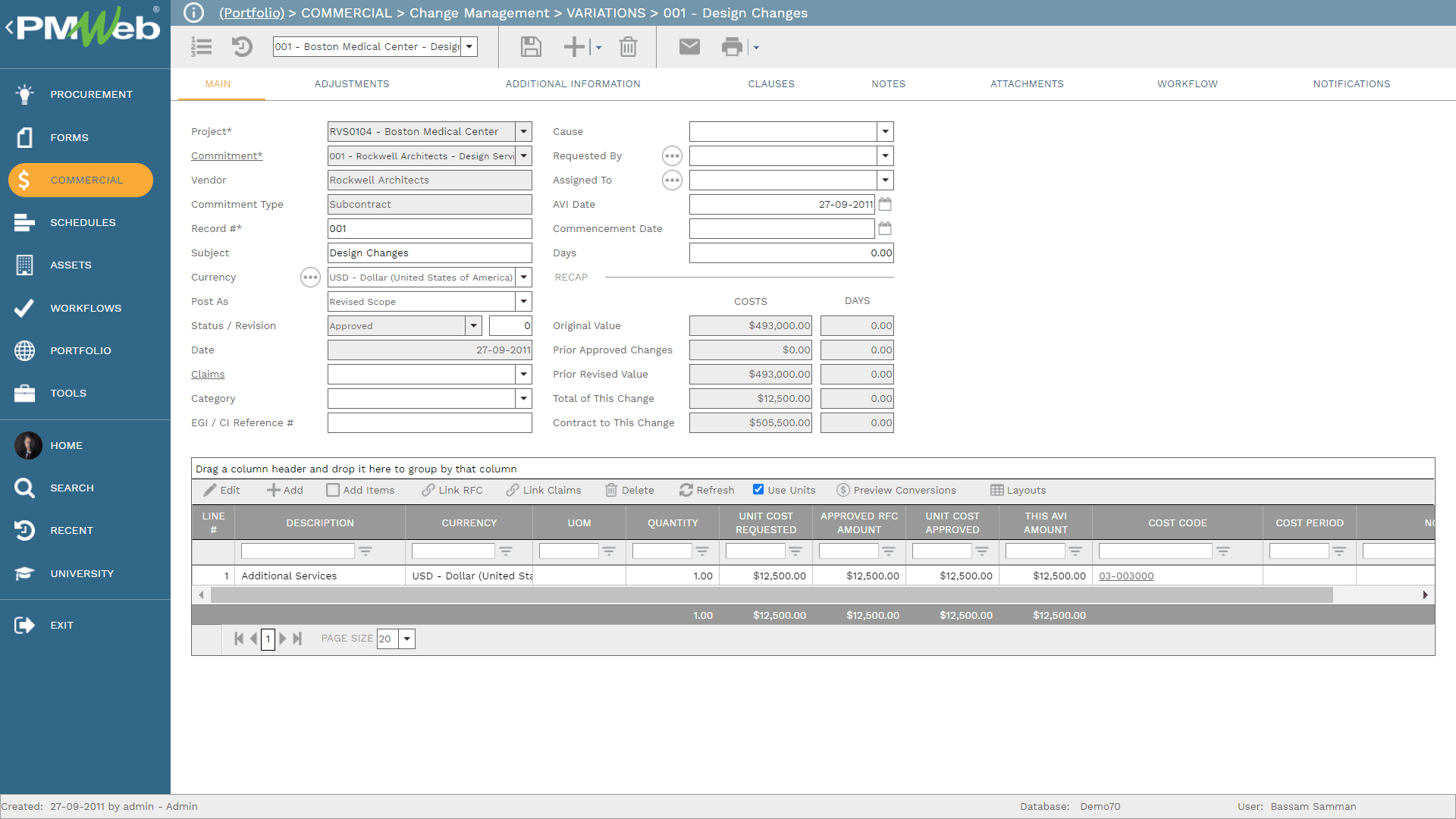
PMWeb progress invoice module can capture the details of all interim and final payment certificates for each contract. The progress invoice module also includes a tab to capture the details of actual payments made against each approved progress invoice.
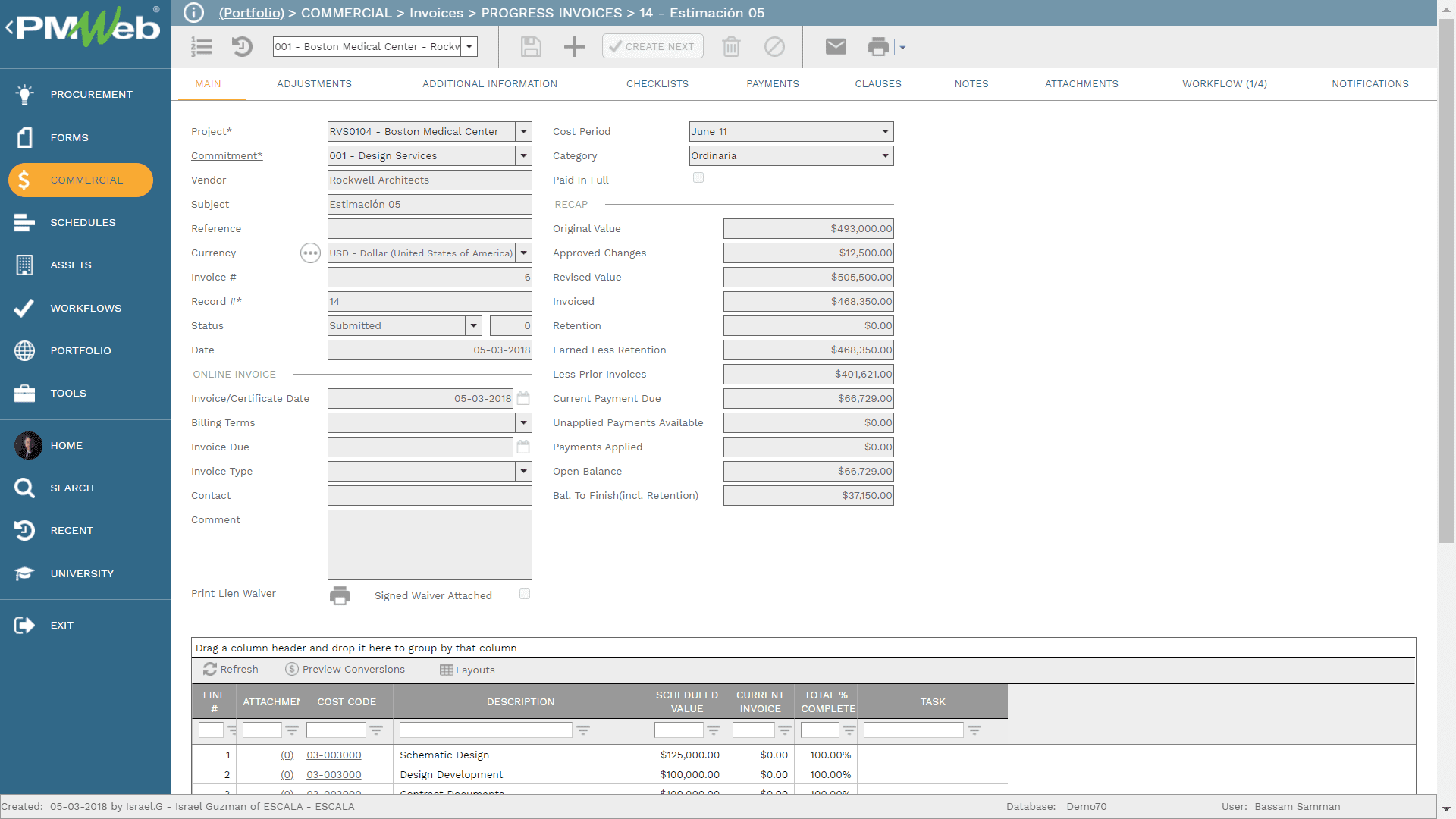
Although payment invoices should always associate with awarded contract agreements, nevertheless, if there is a need to make a direct payment for non-contract expenses, the PMWeb miscellaneous invoices module can capture the details of those invoices as well as payments made against the approved invoices.
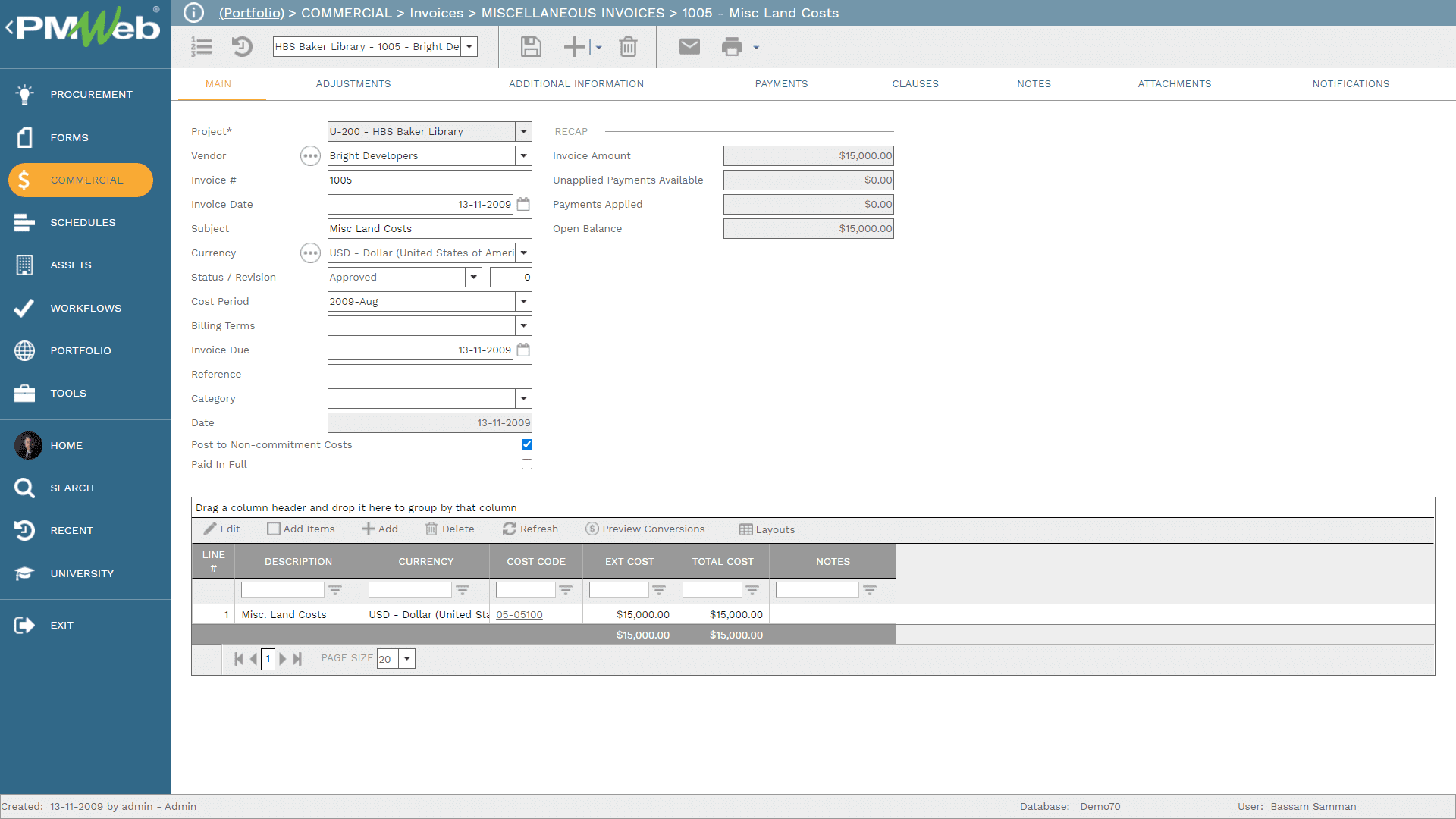
The cost data captured in the budget, budget requests, commitments, potential change orders, change orders, progress invoices, and payment is consolidated and reported on using the PMWeb cost worksheet module. There is no limit to the number of cost worksheets one can create to provide a real-time single version of the truth reporting of all contracts the procurement and contracts department manages.
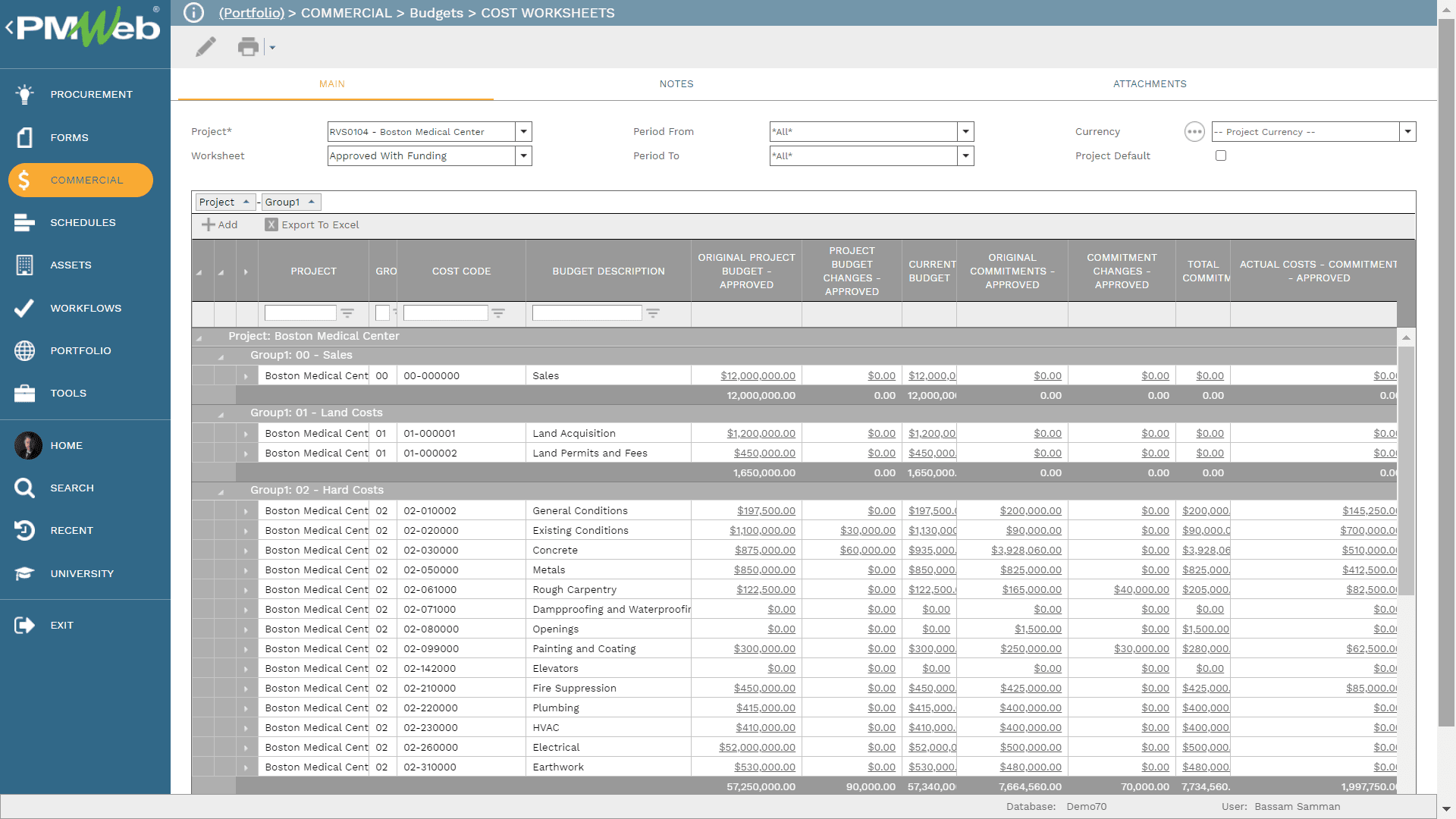
PMWeb funding sources, requests, and authorizations can also be used by the procurement and contracts department in case they want to align funding received from the finance department with the project or contracts budget. PMWeb allows capturing details of funding sources and all authorizations to release those funds.
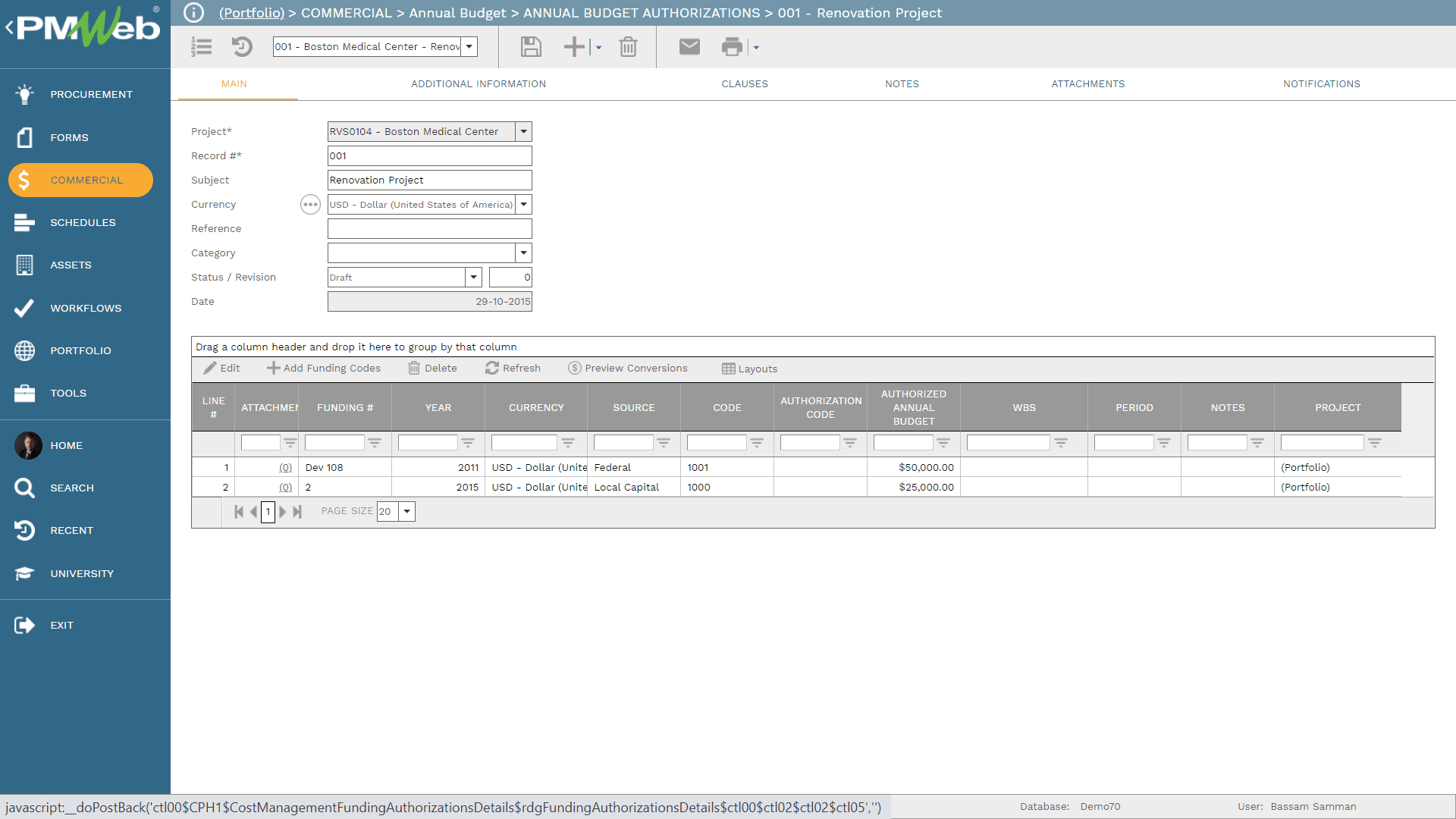
In addition to the different procurement and contract management modules that come ready to use in PMWeb, the custom form builder allows creating the many other processes needed for managing contracts. For example, using the PMWeb custom form builder, one can create the templates for the letter of intent, letter of regret, letter of award, notice to proceed, contract management checklist, contract closeout, supplier performance appraisal among many others.

Most of the transactions for the procurement and contract management processes could have supportive documents such as drawings, pictures among others that need to be attached to the form as well as links to other related records and imported MS Outlook emails. Those documents which are already uploaded and stored in the PMWeb document management repository can be attached to any process transaction.
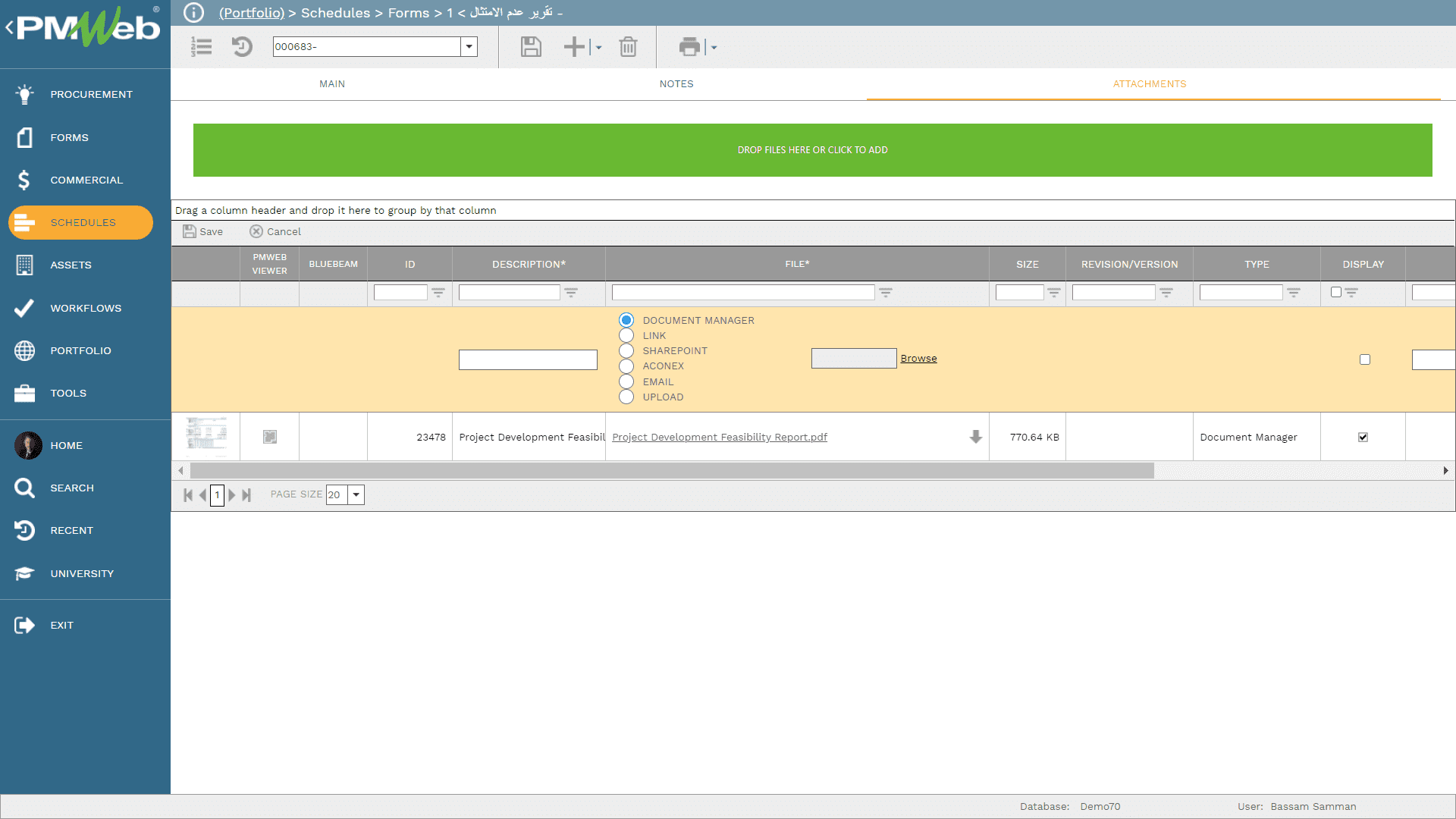
In addition, and to enforce accountability in reviewing and approving or rejecting transactions of any of procurement and contract processes, assign a workflow to each process. The workflow details the tasks assigned to each individual, the duration for each task, available actions to be made, rules for multiple reviewers, and the sequence for performing those tasks. In addition, the workflow could include conditions to enforce the approval authority levels.
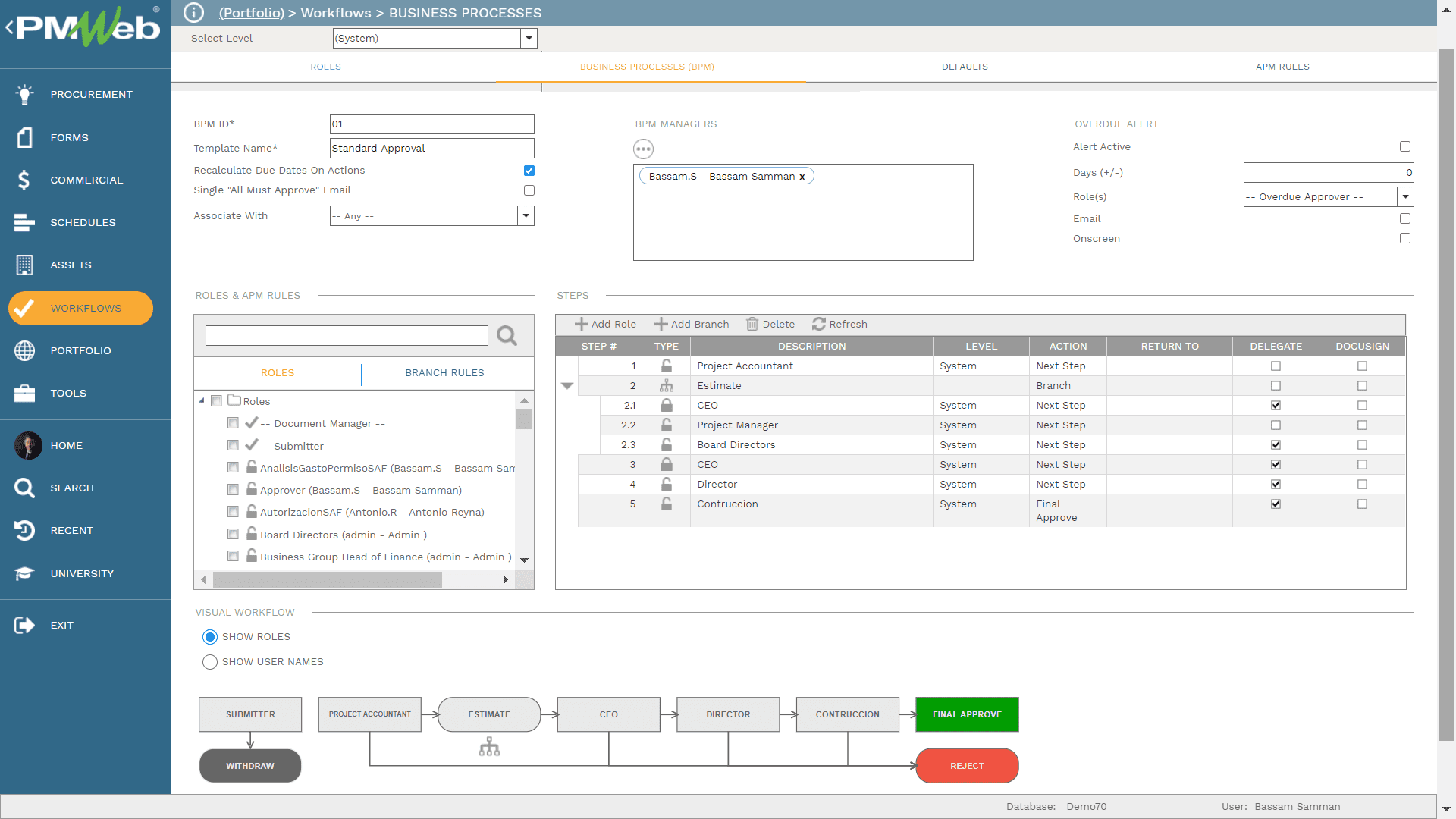
The information captured in the different procurement and contract management processes will become the basis for creating a real-time single version of the truth reports and dashboards. Those could include reports that are specific to each process as well as reports and dashboards of the different procurement and contract management processes as well as a dashboard for the overall performance of the procurement and contracts department.
Those reports and dashboards could include scorecards and visuals to better understand, analyze, assess, and visualize the performance of the different procurement and contract management processes. All of those reports and reports include filters to select the projects, contracts or vendors to report on. Now, you have enabled an agile digital transformation of procurement and contract management

